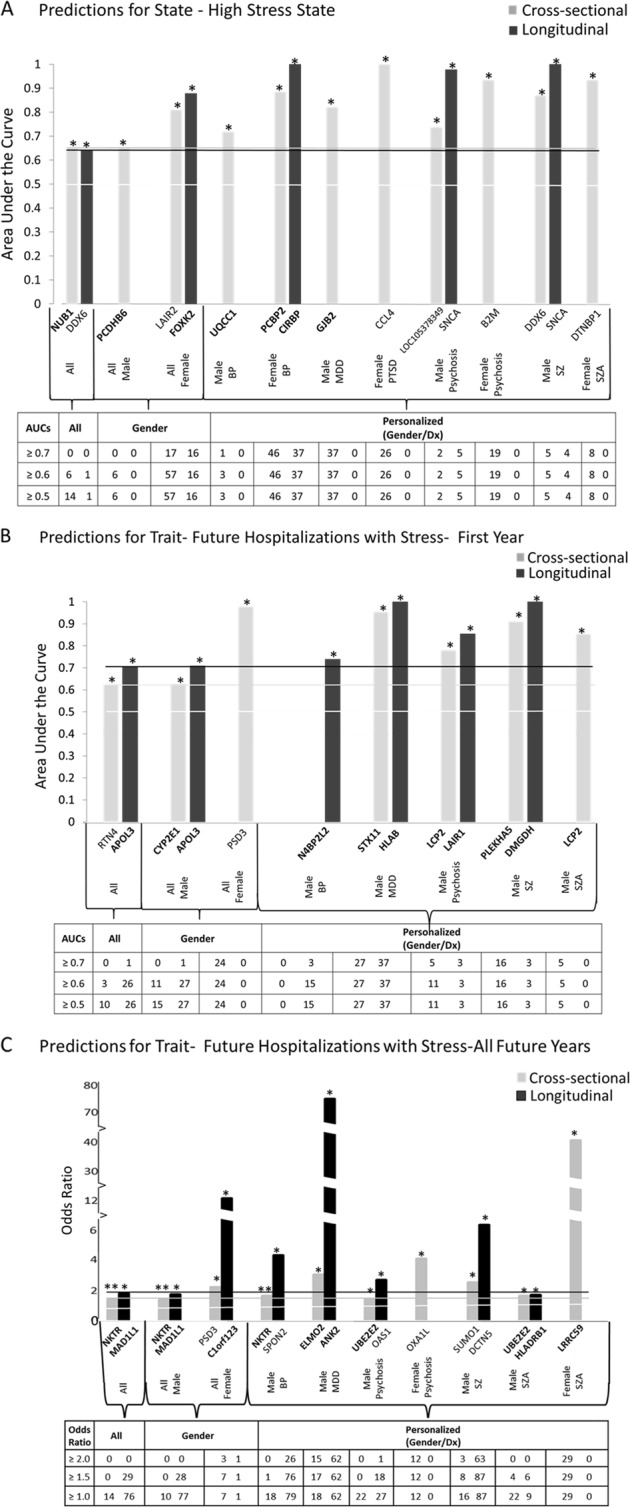Fig. 2.

Best predictive biomarkers. From among top candidate biomarkers (n = 285) from Steps 1–3 (Discovery—39, Prioritization—21, Validation—232 bolded). Bar graph shows best predictive biomarkers in each group. *Nominally significant for predictions p < 0.05. **Bonferroni significant for the 285 biomarkers tested. Table underneath the figures displays the actual number of biomarkers for each group whose area under the receiver-operating characteristic curve p values (a, b) and Cox odds ratio p values (c) are at least nominally significant. Some gender and diagnosis groups are missing from the graph as they did not have any significant biomarkers. Cross-sectional is based on levels at one visit. Longitudinal is based on levels at multiple visits (integrates levels at most recent visit, maximum levels, slope into most recent visit, and maximum slope). Dividing lines represent the cutoffs for a test performing at chance levels (white) and at the same level as the best biomarkers for all subjects in cross-sectional (gray) and longitudinal (black) based predictions. All biomarkers perform better than chance. Biomarkers performed better when personalized by gender and diagnosis
